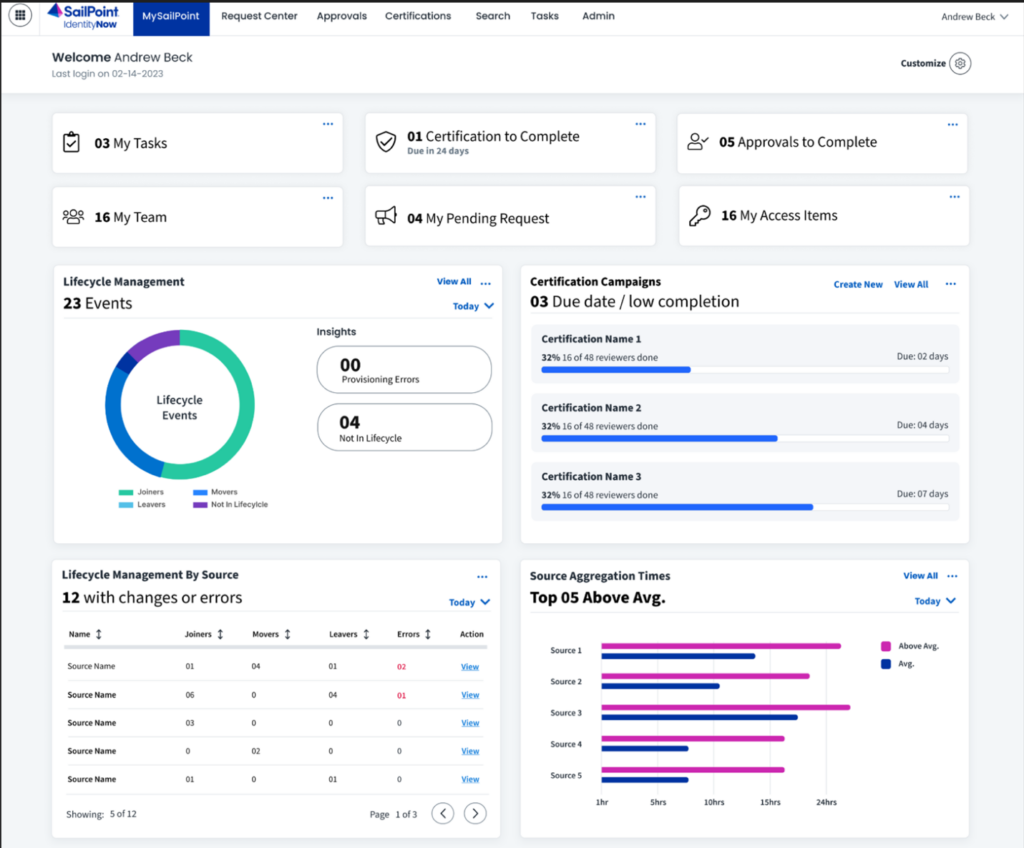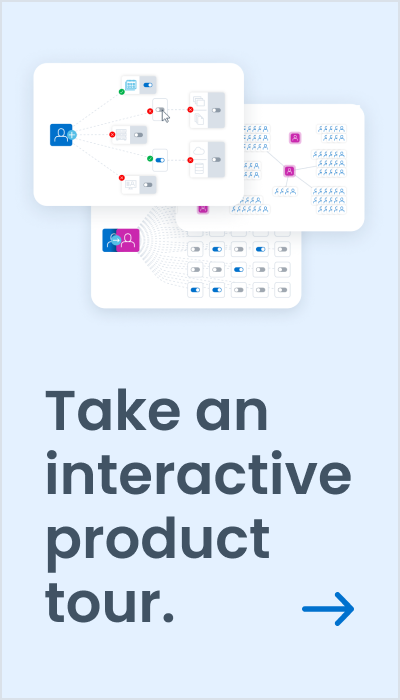Introducing MySailPoint: A smarter way to discover, manage, and secure your Identity Security data
Authored by Tyler Harman and Cameron Wilson
We are thrilled to introduce MySailPoint, the new homepage experience for our multi-tenant SaaS identity security products that allows admins to create a personalized dashboard with widgets that surface the most relevant and actionable data for their roles and goals.
SailPoint users know the importance of having access to accurate and timely data about their identity security activities. Whether they need to monitor compliance, track provisioning, manage access requests, or troubleshoot issues, they want and need to have a clear picture of what is happening in their organization. Until now, though, getting that data took some finesse.
That is no longer the case, as MySailPoint will be the first homepage experience of its kind in the industry. In fact, one customer who has been testing the product said, “I think what your team is trying to figure out right now is, in my experience, the greatest weakness of governance platforms.”
Well, we figured it out. But how did we do it?
How we built MySailPoint: A user-centered research process
To create MySailPoint, we followed a user-centered research process that involved multiple rounds of testing and feedback from real SailPoint users. We wanted to understand the main pain points that users face when working with SailPoint data, the key use cases and scenarios that users need to support with their data, and the expectations and preferences of users for a dashboard experience.
Once we got to the testing phase, we wanted to glean how users interact with different types of widgets and data visualizations and how they perceive the value and usefulness of each widget.
We analyzed the results of our testing and identified key insights and themes that informed our design decisions for the next iteration of MySailPoint. We also prioritized the most valuable and feasible widgets based on user feedback.
The widget way
So, what are these magical widgets, you ask?
We launched six new widgets, and more will follow in the coming months. The new admin widgets include:
- Lifecycle management – A snapshot of lifecycle events that have occurred in a period of time
- Certification campaigns – View the status of active certification campaigns that are due soon, including the due date and percentage complete
- Lifecycle management by source – A breakdown of errors and changes in lifecycle state by source
- Sources with errors and warnings – Quickly see any errors or alerts that are happening, sorted by source
We will also have two widgets for customers who purchase our new Data Access Security product:
- Data Accounts Overview
- Account with Excessive Access to Sensitive Data

The MySailPoint advantage
MySailPoint is designed to help you:
– See your data in real-time: A single landing page where you can see all the widgets that matter to you. You can choose from a library of pre-built widgets that cover common use cases such as compliance status, provisioning activity, access requests, source health, etc.
– Customize your data: Configure each widget according to your preferences. You can change the filters and time range, as well as resize, rearrange, add, or remove widgets as you wish.
– Drill down into your data: Explore your data in more depth by clicking on any widget. You can see more details, charts, tables, or logs related to the widget.
– Learn from your data: Discover new insights and trends from your data. You can compare different widgets or time periods, identify anomalies or outliers, or spot patterns or correlations. You can also get recommendations or tips based on your data.
We’re so excited for you to begin using MySailPoint, but we’re not finished yet. We have so much more planned, as well as (spoiler) preparing the groundwork for you to be able to create your own custom widgets. We look forward to hearing about your experiences and partnering with you to shape and simplify the future of identity security.



Discussion